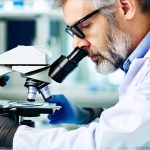Body temperature regulation is fundamentally intertwined with maintaining homeostasis – the delicate internal balance necessary for optimal physiological function. While often considered separately, these two systems are deeply interconnected, particularly when considering urine concentration. A slight fluctuation in core body temperature can significantly impact renal blood flow, glomerular filtration rate (GFR), and hormonal signaling pathways like those involving vasopressin (ADH), all of which directly influence the kidneys’ ability to produce concentrated or dilute urine. This interplay is crucial for preserving fluid balance, electrolyte levels, and ultimately, overall health.
The kidney’s role in maintaining these balances extends beyond simple waste excretion; it acts as a dynamic regulator, adapting to varying physiological demands. The consistency of urine concentration – its ability to remain within a narrow range despite changes in hydration status or environmental conditions – isn’t merely about efficient water reabsorption. It also reflects the intricate communication between the nervous system, endocrine system (particularly the hypothalamic-pituitary axis), and the kidneys themselves. Body temperature acts as a critical modulator of this communication network, influencing the sensitivity of osmoreceptors, the release of vasopressin, and ultimately, the function of aquaporins within the collecting ducts. Understanding how these systems interact allows for a more holistic view of human physiology and the mechanisms underlying fluid homeostasis. If you are a woman preparing for a visit, consider reviewing how to prepare beforehand.
The Thermoregulatory-Renal Axis: A Symbiotic Relationship
The relationship between body temperature and urine concentration isn’t simply correlational; it’s driven by several physiological mechanisms. Elevated body temperature, like that experienced during exercise or fever, can lead to increased sweating – a primary cooling mechanism. This fluid loss, if not adequately compensated for, results in reduced blood volume and an increase in plasma osmolality. The hypothalamus detects these changes, triggering the release of vasopressin from the posterior pituitary gland. Vasopressin then acts on the V2 receptors in the collecting ducts of the kidneys, stimulating the insertion of aquaporin water channels and increasing water reabsorption – leading to more concentrated urine. Conversely, a decrease in body temperature can suppress vasopressin release, resulting in diuresis and more dilute urine.
Furthermore, temperature directly impacts renal hemodynamics. Higher temperatures cause cutaneous vasodilation, diverting blood flow away from the core and potentially reducing renal perfusion pressure. This reduction in GFR can be partially compensated for by increased efferent arteriolar tone mediated by angiotensin II, maintaining some degree of filtration despite the decreased blood flow. However, prolonged or significant reductions in renal perfusion can ultimately compromise kidney function and impact urine concentrating ability. The body’s attempt to maintain core temperature thus has direct consequences for how effectively the kidneys can regulate fluid balance.
This interconnectedness is further complicated by the fact that many factors influencing thermoregulation – such as hydration status, metabolic rate, and ambient temperature – also independently affect urine concentration. For instance, dehydration will naturally lead to more concentrated urine, but this effect is amplified if body temperature is simultaneously elevated due to increased vasopressin release. The interplay between these variables creates a dynamic system where precise regulation requires constant monitoring and adjustment by the body. It’s important to understand cloudy urine concerns as well, particularly for women over 40.
Hormonal Modulation & Feedback Loops
The hormonal control of urine concentration relies heavily on the hypothalamic-pituitary axis, with vasopressin playing a central role. However, other hormones, such as aldosterone (regulating sodium reabsorption) and atrial natriuretic peptide (ANP – promoting sodium excretion), also contribute to fluid balance and indirectly impact urine concentrating ability. Body temperature influences these hormonal pathways in several ways. As mentioned earlier, changes in core temperature can directly affect vasopressin release. But beyond that, the metabolic demands associated with thermoregulation itself can influence hormone levels.
For example, during fever, increased metabolic rate leads to higher energy expenditure and potentially altered hormone secretion patterns. Stress hormones like cortisol, released in response to both elevated temperature and physiological stress, can also affect renal function and urine concentration. Moreover, the feedback loops within this system are crucial for maintaining stability. Osmoreceptors in the hypothalamus detect changes in plasma osmolality and provide feedback to regulate vasopressin release. Temperature sensors also influence hypothalamic activity, modulating these feedback mechanisms and ensuring that fluid balance is appropriately adjusted based on both hydration status and thermal state.
The effectiveness of this hormonal modulation can be compromised by underlying conditions like diabetes insipidus (affecting vasopressin production or receptor function) or renal disease, highlighting the importance of a healthy endocrine system and kidney function for maintaining urine concentration consistency in response to temperature fluctuations.
The Role of Aquaporins
Aquaporins are water channel proteins found in cell membranes that facilitate rapid transport of water across biological barriers. In the kidneys, aquaporin-2 (AQP2) is particularly important for regulating water reabsorption in the collecting ducts, and its expression and translocation to the cell surface are directly controlled by vasopressin. Body temperature impacts AQP2 function through several mechanisms. Firstly, elevated temperatures can increase membrane fluidity, potentially enhancing the insertion of AQP2 channels into the cell membrane – though this effect is complex and depends on other factors.
Secondly, changes in body temperature can affect the expression of AQP2 itself. Studies have shown that prolonged exposure to heat stress can downregulate AQP2 gene expression, leading to reduced water reabsorption capacity over time. Conversely, cold exposure might increase AQP2 expression, though this effect is less well-defined. Thirdly, inflammation associated with fever or infection can also influence aquaporin function, potentially disrupting the normal regulation of water balance. It’s important to note that these effects are not always linear; the body’s compensatory mechanisms and individual variations in genetic predisposition can play a role in determining the overall impact of temperature on AQP2 expression and function.
Impact of Exercise & Sweating
Exercise is a potent physiological stressor that significantly impacts both body temperature and fluid balance. During exercise, metabolic rate increases dramatically, leading to increased heat production. To dissipate this heat, the body sweats profusely, resulting in substantial fluid loss. This fluid loss reduces blood volume, increasing plasma osmolality and triggering vasopressin release – as previously discussed. However, exercise also introduces additional complexities. Muscle contraction generates osmotic pressure gradients that draw water out of the circulation, further exacerbating dehydration.
The intensity and duration of exercise play a crucial role in determining the extent of fluid loss and subsequent changes in urine concentration. Prolonged or high-intensity exercise can lead to significant dehydration, resulting in highly concentrated urine and potentially impairing kidney function. Furthermore, individual factors like sweat rate, hydration status before exercise, and environmental conditions (temperature, humidity) all influence the body’s ability to maintain fluid balance during physical activity. Proper hydration strategies are therefore essential for preserving both performance and health during exercise, ensuring that the kidneys can continue to effectively regulate urine concentration despite the physiological challenges posed by increased heat production and fluid loss. Using stillness as a tool for bladder restoration may also be helpful in managing these conditions.
Clinical Implications & Future Research
Disruptions in thermoregulation or renal function can have significant clinical consequences, impacting fluid balance and overall health. Conditions like heatstroke, dehydration, diabetes insipidus, and chronic kidney disease all affect the body’s ability to maintain urine concentration consistency, potentially leading to serious complications. Understanding the intricate interplay between body temperature, hormonal regulation, and kidney function is therefore crucial for effective diagnosis and treatment of these conditions.
Future research should focus on further elucidating the molecular mechanisms underlying the thermoregulatory-renal axis. This includes investigating how different aquaporin isoforms are affected by temperature changes, identifying novel biomarkers for assessing fluid balance during exercise or illness, and developing targeted therapies to restore kidney function in patients with impaired urine concentrating ability. Additionally, exploring the role of individual genetic variations in determining susceptibility to dehydration and heatstroke could lead to personalized strategies for preventing these conditions. Ultimately, a more comprehensive understanding of this complex interplay will pave the way for improved clinical care and enhanced human health.





















